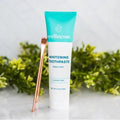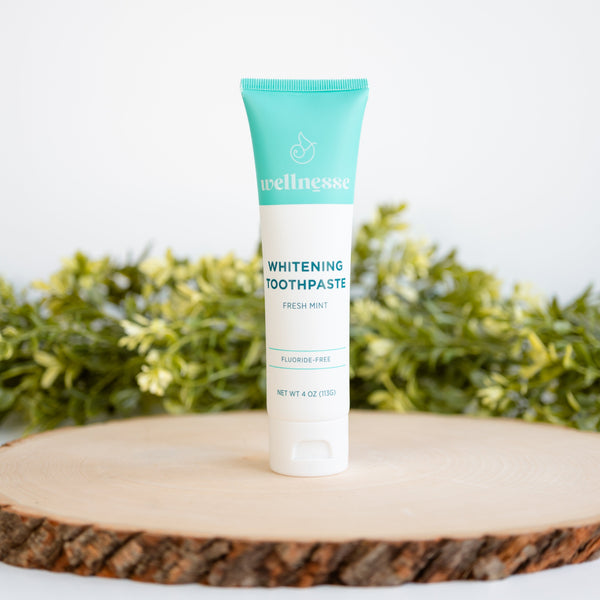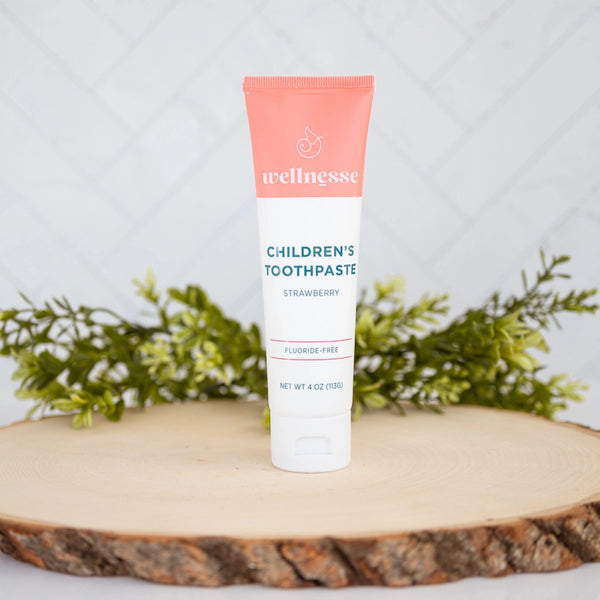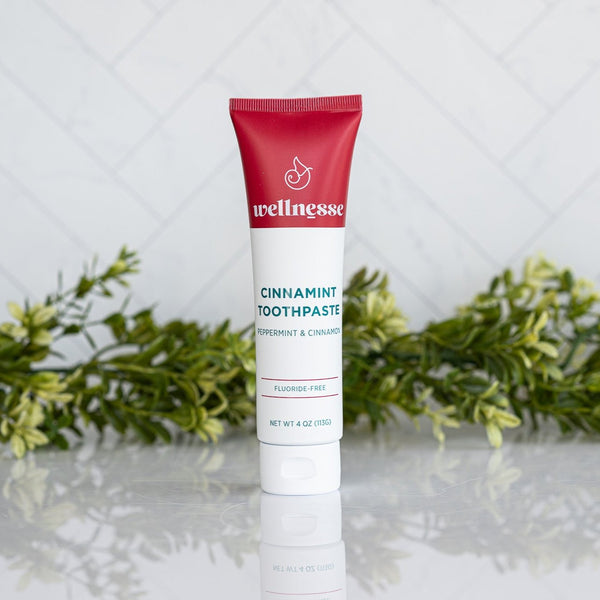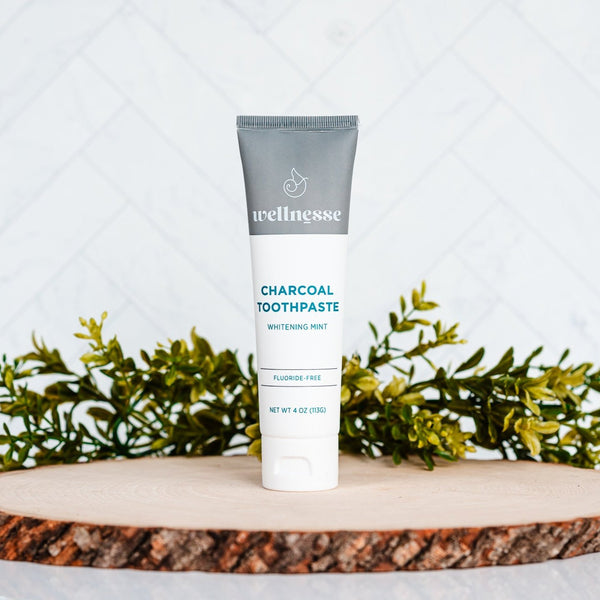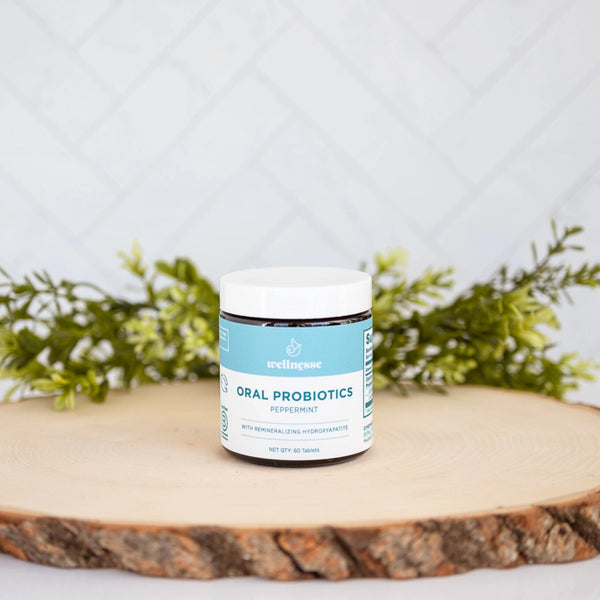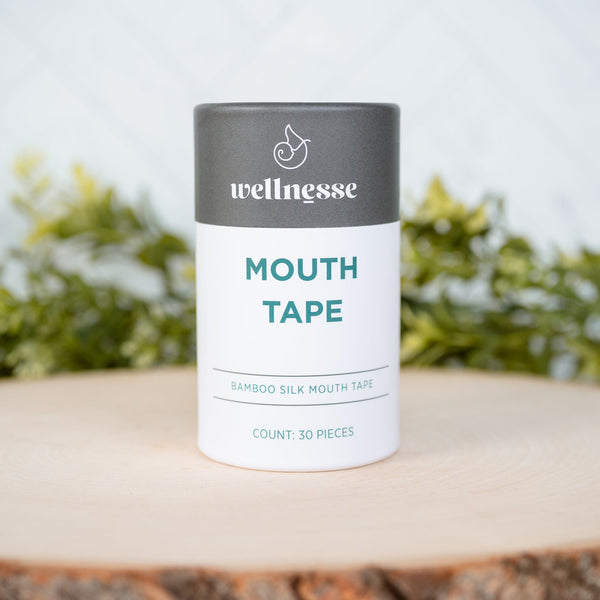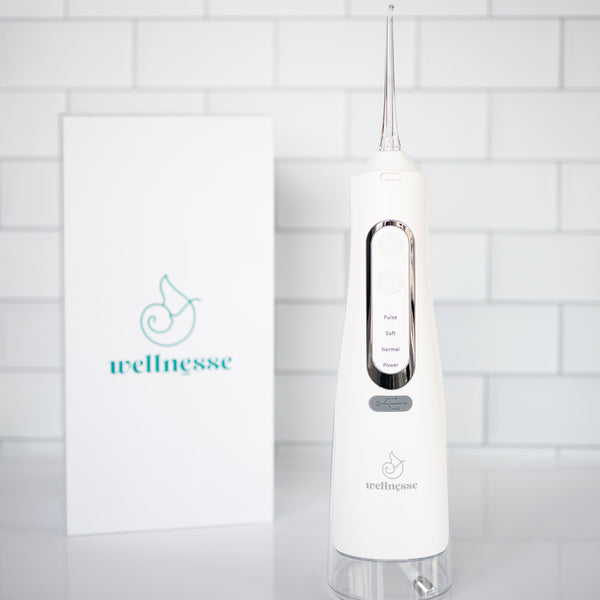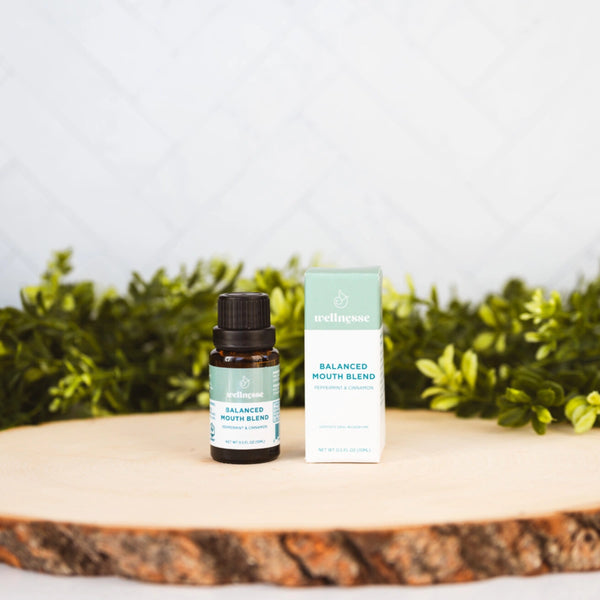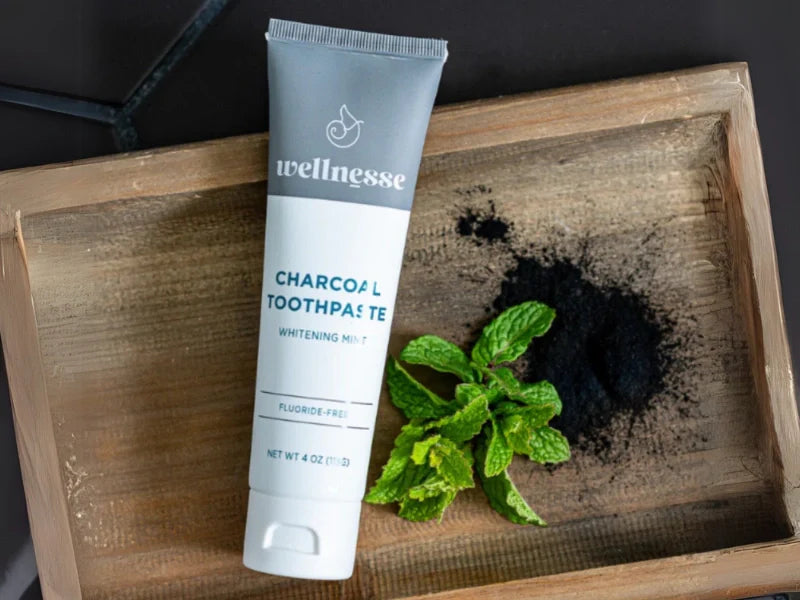Have you ever taken a bite of ice cream or a sip of hot coffee only to feel a sudden jolt of pain in your teeth? If so, you're familiar with tooth sensitivity – a common problem that can make enjoying your favorite foods a challenge. Research suggests roughly one in every eight people experiences this kind of sensitivity. Many people turn to a toothpaste for sensitive teeth as a quick fix, often a desensitizing toothpaste containing ingredients that numb the nerve or block pain signals. These products can provide temporary relief, but they don't address the root cause: weakened enamel.

Understanding Tooth Sensitivity and Enamel Erosion
It's important to know what happens when enamel wears away to understand why teeth become sensitive. Enamel is the hardest substance in the human body, but it isn't indestructible. Here are the key factors contributing to enamel degradation:
-
Acid Erosion: Prolonged and frequent exposure to acidic foods and drinks is a leading cause of enamel degradation. Common culprits include citrus fruits (lemons, oranges, grapefruit), carbonated beverages (sodas, sparkling water), certain fruit juices, and even seemingly innocuous items like salad dressings containing vinegar. When these acids come into contact with tooth enamel, they initiate a chemical process where the acids dissolve the mineral content of the enamel. This process, known as acid erosion, gradually weakens the structural integrity of the enamel. Consistent acidic attacks lead to a noticeable thinning of the enamel layer, making teeth appear more translucent or yellowish as the underlying dentin becomes more visible. As the protective enamel layer diminishes, teeth become more vulnerable to further damage, including cavities and increased sensitivity. Recognizing and moderating the consumption of highly acidic items, along with practices like rinsing with water after acidic meals, can significantly mitigate this risk.
-
Aggressive Brushing: While essential for oral hygiene, improper brushing techniques can paradoxically contribute to enamel wear. Employing overly aggressive brushing with excessive force, particularly with hard-bristled toothbrushes, creates a mechanical abrasion on the enamel surface. This physical erosion, though subtle in its immediate effects, can accumulate significantly over the years. The constant scrubbing action literally wears away the enamel, leading to a diminished protective layer, especially near the gum line. This can also contribute to gum recession, further exposing sensitive root surfaces. Adopting proper brushing technique, using a soft-bristled toothbrush, and applying gentle pressure in a circular or short back-and-forth motion is paramount to effectively clean teeth without causing irreversible damage to the enamel or gums.
-
Parafunctional Habits: Parafunctional habits refer to repetitive actions involving the teeth that are outside their normal function of chewing and speaking. The most common examples include teeth grinding (bruxism) and clenching. These habits often occur unconsciously, particularly during sleep, but can also manifest during periods of stress or concentration. The immense and unnatural pressure exerted during bruxism or clenching significantly strains the teeth, leading to accelerated wear and tear on the enamel. This can manifest as noticeable cracks, chips, and flattening of the biting surfaces of teeth. The sustained forces exceed what the enamel is designed to withstand, slowly breaking down its crystalline structure. Addressing these habits is critical for preserving enamel integrity; solutions often include the use of custom-fitted nightguards to protect teeth during sleep, stress management techniques, and in some cases, orthodontic intervention or muscle relaxants.
-
Natural Aging Process: The natural aging process inevitably plays a role in the gradual thinning of tooth enamel. Over a lifetime of regular use, the cumulative wear and tear on the teeth contributes to a slow, progressive reduction in enamel thickness. This is a normal physiological process, as decades of mechanical forces and environmental exposures take their toll. While unavoidable, maintaining excellent oral hygiene throughout life, including regular dental check-ups and cleanings, can help minimize the extent of age-related enamel degradation and ensure the enamel remains as robust as possible for as long as possible. Good oral habits in younger years lay the foundation for healthier enamel in later life.
Understanding these factors is paramount for maintaining healthy enamel and preventing tooth sensitivity. By adopting preventive measures and seeking professional dental care, individuals can significantly extend the life and health of their teeth.
Common quick fixes for sensitivity don't actually solve this enamel problem. Traditional desensitizing toothpaste products often use ingredients like potassium nitrate to calm the tooth's nerve or stannous fluoride to temporarily plug those dentin tubules. This can certainly help dull the pain. However, if the enamel remains weak or damaged, the relief is usually short-lived because the underlying cause hasn't been corrected. Ideally, the best sensitivity toothpaste would do more than just numb the nerves; it would strengthen or restore the enamel itself to prevent the pain from occurring in the first place.
What Is Hydroxyapatite?
Hydroxyapatite, a naturally occurring mineral form of calcium apatite, is fundamentally a compound of calcium and phosphate. While this might sound like complex scientific jargon, its presence in our bodies is incredibly commonplace and essential. In fact, you carry a significant amount of it with you every single day. The vital role of hydroxyapatite is evident in its primary locations within the human body: our bones and teeth. These crucial structural components are largely composed of this remarkable mineral. Specifically, the outermost protective layer of each tooth, known as enamel, is almost entirely made up of densely packed hydroxyapatite crystals. This crystalline structure is precisely what bestows upon our tooth enamel its remarkable strength, unparalleled hardness, and resistance to wear and tear.
Because it is biocompatible and already present in the body, hydroxyapatite is an ideal ingredient for repairing teeth. Scientists have figured out how to produce a synthetic version of this mineral to use in toothpaste and other oral care products. In micro-hydroxyapatite oral care formulations, the hydroxyapatite particles are made extremely small so they can effectively bind to the tooth surface and seep into tiny crevices. By formulating toothpaste with these minuscule particles of the same material teeth are made of, we get a product that can integrate with our enamel rather than just coating it.
History and Applications Beyond Toothpaste
Hydroxyapatite toothpaste was originally developed decades ago (with some help from NASA researchers) to help astronauts restore mineral loss in their teeth after space missions. For a long time, it was mainly used in Japan and Europe, but lately, this technology has gained attention worldwide as a cutting-edge way to protect and strengthen teeth more naturally.
In dentistry, hydroxyapatite’s first primary application was not in toothpaste, but rather in the field of dental bone grafting. Traditional bone grafts often relied on autogenous bone (taken from the patient) or allografts (from donors), both of which came with challenges such as limited supply, risk of disease transmission, and the need for additional surgical procedures. The introduction of synthetic hydroxyapatite as a bone graft substitute marked a significant advancement. Because HA closely mimics the mineral phase of human bone, it is readily accepted by the body and supports the growth of new bone cells—a process known as osteoconduction. This made it particularly valuable in procedures such as periodontal surgery, dental implant placement, and the repair of jawbone defects following trauma or disease. Over time, hydroxyapatite-based materials became staples in oral surgery, offering improved outcomes and reducing the risks associated with traditional grafting methods.
Beyond dentistry, hydroxyapatite has found a variety of other medical uses. In orthopedics, it is used to coat joint implants and prosthetics, enhancing their integration with surrounding bone and reducing the likelihood of implant rejection or loosening. Its ability to bond directly with bone tissue has made it a preferred material for coatings on hip and knee replacements. Additionally, hydroxyapatite has been explored in the development of drug delivery systems, where its porous structure can be used to carry and gradually release therapeutic agents at targeted sites within the body. The transition of hydroxyapatite from these advanced medical and dental applications into everyday oral care products, such as toothpaste, represents the culmination of decades of research into its safety and effectiveness. Its proven track record in supporting tissue regeneration and its natural presence in the body have made hydroxyapatite a trusted ingredient, not just for remineralizing enamel, but as a versatile material with a rich history in the broader field of healthcare.
How Hydroxyapatite Rebuilds and Protects Enamel
Unlike a conventional toothpaste that simply cleans the tooth surface, a hydroxyapatite toothpaste actively works to repair the surface. When you brush with a hydroxyapatite formula, millions of tiny mineral particles are released onto your teeth. These particles have a strong affinity for the enamel because they are made of the same material. They can lodge into the microscopic rough spots and pores left by acid erosion or wear, effectively filling in those weak areas.

In practical terms, using a hydroxyapatite toothpaste turns your daily brushing into a form of enamel repair toothpaste treatment. The hydroxyapatite supplies the calcium and phosphate needed to re-crystallize the enamel right where it's needed. Studies have even shown that hydroxyapatite particles in toothpaste can directly deposit onto weakened enamel and restore demineralized enamel surfaces. This is a form of natural enamel repair because instead of using synthetic chemicals to force minerals into the tooth, you are applying the natural mineral component of teeth to regrow the tooth’s own protective layer. Another advantage is that hydroxyapatite doesn't rely on your saliva's minerals to do the job. Traditional fluoride works by drawing calcium and phosphate from saliva to reinforce enamel, which means it only works well if those minerals are present in sufficient quantity. Hydroxyapatite, by contrast, delivers a pre-made source of these minerals straight to the tooth. It forms a new protective apatite layer over the teeth, which not only fixes existing weak spots but also makes it harder for acids and bacteria to cause future demineralization.
Hydroxyapatite vs. Fluoride: A Natural Alternative
Fluoride has long been proven to prevent cavities, and nearly every mainstream oral care brand touts it as an active ingredient. However, hydroxyapatite now offers a compelling alternative for those who want comparable protection without fluoride. In terms of cavity prevention, studies indicate that hydroxyapatite toothpaste can be just as effective as fluoride toothpaste at reducing tooth decay. In other words, using hydroxyapatite doesn't mean sacrificing your cavity protection – it simply means achieving it in a different way.
One major difference between the two ingredients is their safety profile and how they interact with the body. Fluoride is effective, but it is a mineral that must be carefully dosed. Swallowing too much fluoride can lead to dental fluorosis, a condition that discolors and weakens the enamel. This is why young children are often supervised when brushing with fluoride and why toothpaste tubes warn against ingesting it. Hydroxyapatite, by contrast, is nontoxic and bioidentical to the mineral in our teeth. There's no risk of fluorosis or poisoning; it’s safe if a bit is accidentally swallowed during brushing. This makes hydroxyapatite very appealing for families with young kids, as well as adults who prefer to avoid potential fluoride side effects.
Gentle Whitening Without Abrasives
Most gentle whitening toothpaste products on the market rely on either mild abrasives (like silica particles) to scrub away stains or peroxide-based bleaching agents to chemically whiten the enamel. While those methods can be effective, they often come at the cost of increased sensitivity or enamel wear. Abrasive whitening toothpastes can gradually thin your enamel if overused, and peroxide whiteners are notorious for causing sharp "zingers" of sensitivity in some people.
Hydroxyapatite takes a different approach to whitening. Since the hydroxyapatite particles naturally have a white, opaque color, when they integrate into the enamel surface, they can make the teeth appear brighter. It fills in the tiny scratches and rough spots on your teeth, smoothing the surface and increasing its reflectivity. A smoother enamel surface reflects light more uniformly, which gives a whiter, glossier look. At the same time, a layer of new hydroxyapatite coating the enamel adds a bit of white color of its own. Studies suggest that this can indeed lead to a visibly whiter smile over time, without bleaching or harsh friction. Because of this effect, hydroxyapatite can create a whiter appearance on teeth even though it doesn't "bleach" them. For someone with sensitive teeth, this is a huge plus. It means you can get stain removal and a brightness boost without grinding down your enamel or irritating your gums. Hydroxyapatite toothpaste might be the best whitening toothpaste for sensitive teeth, exactly because it avoids the usual culprits that cause sensitivity during whitening.
Supporting Gum Health and Reducing Plaque
Excess plaque leads to inflammation, gum irritation, and eventually gum disease. Hydroxyapatite helps in a couple of ways. First, the particles of hydroxyapatite can bind to bacterial cell walls and make it harder for bacteria to stick to the teeth. This means less plaque formation between brushings. Second, by smoothing the tooth surface, hydroxyapatite makes it more difficult for new plaque to take hold (a rough, pitted tooth surface gives bacteria lots of places to cling, whereas a smooth mineral-coated surface does not).
If you are dealing with sensitive or bleeding gums, using a gentle toothpaste is crucial. Many people search for a toothpaste for bleeding gums that can reduce irritation while still fighting plaque. They typically omit harsh detergents and abrasives and instead use the remineralizing action to keep your mouth clean. Research suggests that hydroxyapatite toothpastes can significantly reduce plaque levels and even decrease gum bleeding, performing as well as or better than traditional formulas in improving gum health. By reducing the bacterial burden in the mouth and not aggravating the soft tissues, this toothpaste can help your gums stay pink, firm, and healthy. Another bonus is that hydroxyapatite’s biocompatibility means it's unlikely to cause any irritation or allergic reaction. Some people experience sloughing or soreness from strong ingredients in conventional pastes (like sodium lauryl sulfate or certain flavorings); hydroxyapatite-based toothpastes are often formulated to be soothing and safe for the oral mucosa.
Choosing a Hydroxyapatite Toothpaste
Wellnesse is one example of hydroxyapatite toothpaste brands offering a remineralizing toothpaste with hydroxyapatite, combining this ingredient with other natural elements for a gentle yet effective formula. With several choices out there, how do you pick the right one for you? Here are a few tips:
-
Check the hydroxyapatite concentration: Look for a toothpaste that discloses a significant percentage of hydroxyapatite (many use around 10% by weight). This ensures you're getting enough of the active mineral to make a difference. Some products may use terms like "micro-hydroxyapatite" on the label – both refer to the tiny particle form that is effective for remineralization.
-
Fluoride-free: Most non-abrasive toothpastes are fluoride-free and rely solely on the mineral for cavity protection.
-
Additional ingredients: Just like any toothpaste, check what other ingredients are included. Many toothpastes are formulated with an eye toward natural and non-toxic components – for example, using xylitol as a sweetener, mild flavoring like mint or fruit, and no harsh detergents. If you have particular preferences – say, you want a whitening boost – see if the formula also contains low-abrasion polishing agents or stain removers.
-
Taste and texture: A toothpaste won't do you much good if you or your family won't use it! Hydroxyapatite pastes can have a slightly different feel. Try a flavor that appeals to you or your kids to make daily use more enjoyable.
-
Safety for all ages: One of the big advantages of hydroxyapatite is that it's safe for anyone in the family. There are kids' versions and adult versions, but the main difference is usually flavor. Because it's non-toxic, you don't have to worry about strict pea-sized limits like you do with fluoride toothpaste. There's essentially no risk of overuse as hydroxyapatite toothpaste has no known harmful side effects or dosage ceiling (unlike fluoride). This peace of mind is a great selling point if you shop hydroxyapatite toothpaste online or if you’re pregnant and cautious about ingredients.
Once you find one that fits your needs, making hydroxyapatite toothpaste a part of your daily routine can be one of the best moves for your dental health, combining the modern science of remineralization with the trust of using a naturally derived ingredient.

Making the switch to a hydroxyapatite dentist-recommended toothpaste can be a game-changer if you want to achieve stronger, less sensitive teeth using a natural, biocompatible ingredient. It's an innovation that has already improved oral health for many people, and it might just do the same for you. In the quest for a healthier smile, hydroxyapatite is proving that sometimes the best solutions are those that work in harmony with our body's own design.
Sources
-
University of Utah Health – “The Perils of Sensitive Teeth,” Dec 21, 2023.
-
O’Hagan-Wong K. “The use of hydroxyapatite toothpaste to prevent dental caries,” Odontology (2022), 110(2): 223–230.
-
UT Health San Antonio – “Study shows toothpaste with ‘artificial enamel’ ingredient restores enamel, is more effective than fluoride,” News release, May 30, 2023.
-
Gugnani N., Gugnani S. – “Do we have enough evidence to recommend hydroxyapatite toothpaste for preventing dental caries?” Evidence-Based Dentistry 26, 38–39 (Feb 2025).
-
GoodRx – “Hydroxyapatite Toothpaste vs. Fluoride: Which Is Better for Your Teeth?” (accessed 2025).
-
Living Wellness Dental (Calgary) – “FAQs About Hydroxyapatite Toothpaste,” Aug 21, 2023.
-
Enax J. et al. – “Modes of Action and Clinical Efficacy of Particulate Hydroxyapatite in Preventive Oral Health Care – State of the Art,” The Open Dentistry Journal 13: 274–287 (2019).
